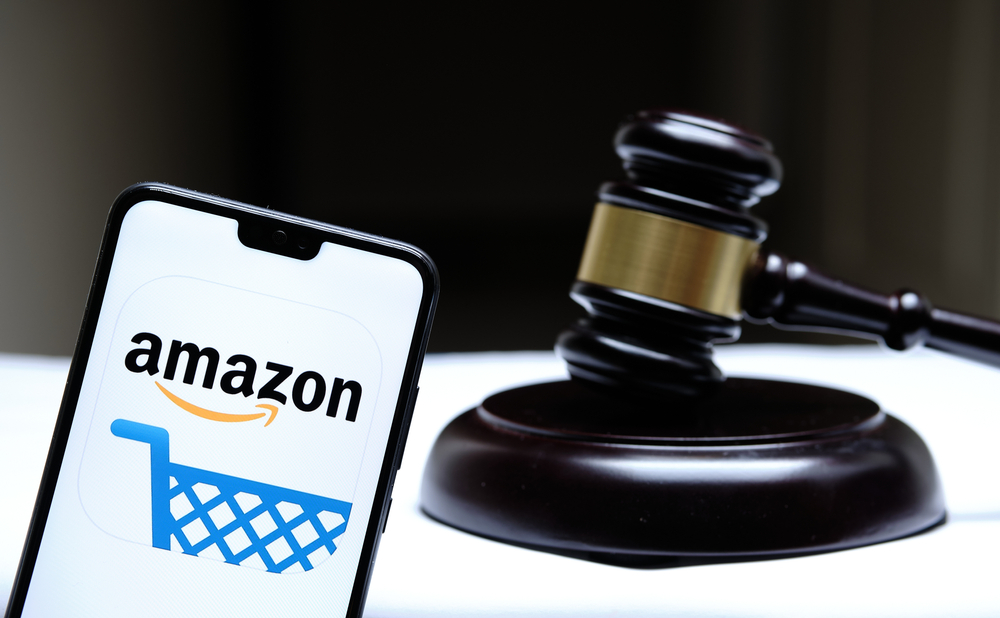The Federal Trade Commission and 17 state attorneys general have filed an antitrust lawsuit against Amazon.com Inc. The FTC lawsuit against Amazon alleges the online merchant participates in anti-discounting tactics. It also says the online marketplace punishes sellers who offer discounts. The lawsuit alleges that Amazon participates in anti-competitive tactics that punish sellers who do not ship through Amazon-owned fulfillment centers.
The FTC seeks to stop the company from abusing its powers to raise prices for consumers and fees against sellers.
“Amazon violates the law not because it is big, but because it engages in a course of exclusionary conduct that prevents current competitors from growing and new competitors from emerging,” according to an FTC press release about the lawsuit.
Amazon is No. 1 in the Top 1000, Digital Commerce 360’s ranking of the largest online retailers in North America. It is also No. 3 in the Global Online Marketplaces Database.
Khan: Amazon is now exploiting its monopoly power
In the release, FTC chair Lina M. Khan said: “The complaint sets forth detailed allegations noting how Amazon is now exploiting its monopoly power to enrich itself while raising prices and degrading service for the tens of millions of American families who shop on its platform and the hundreds of thousands of businesses that rely on Amazon to reach them.”
“We’re bringing this case because Amazon’s illegal conduct has stifled competition across a huge swath of the online economy,” said John Newman, deputy director of the FTC’s Bureau of Competition. “Amazon is a monopolist that uses its power to hike prices on American shoppers and charge sky-high fees on hundreds of thousands of online sellers.”
Amazon responds to FTC lawsuit
In response to the lawsuit, Amazon released a statement from David Zapolsky, Amazon senior vice president of global public policy and general counsel.
“Today’s suit makes clear the FTC’s focus has radically departed from its mission of protecting consumers and competition,” Zapolsky said. “The practices the FTC is challenging have helped to spur competition and innovation across the retail industry, and have produced greater selection, lower prices, and faster delivery speeds for Amazon customers and greater opportunity for the many businesses that sell in Amazon’s store. If the FTC gets its way, the result would be fewer products to choose from, higher prices, slower deliveries for consumers, and reduced options for small businesses — the opposite of what antitrust law is designed to do. The lawsuit filed by the FTC today is wrong on the facts and the law, and we look forward to making that case in court.”
Lawsuit widely anticipated, says analyst
Colin Sebastian, senior research analyst at financial services firm Baird Equity Research Internet, said the lawsuit “is a relatively benign scenario for Amazon.”
The lawsuit includes fewer charges than expected, including any call to break up the company. “Probably because the FTC realized this was unlikely to pass judicial scrutiny,” he said.
“At best, the FTC could hope for some modest changes to Amazon’s pricing policies, fewer requirements around Prime shipping, and presumably improved search results,” Sebastian said.
Small and medium-sized retailers say selling on Amazon is necessary
Amazon charges sellers a referral fee for products sold on its marketplace. Sellers pay either a percentage of the sales price or a set fee of $0.30, whichever is higher, according to Amazon. Fees range from 8% to 20% for most categories, and up to 45% for Amazon device accessories. Those fees are in addition to other seller fees of either $0.99 per item or $39.99 per month.
Sellers also pay to use Fulfillment by Amazon, the online marketplace’s shipping and delivery service. They pay by shipping weight and dimensions of the products. This ranges from $3.22 for small standard packages to $158.49 for oversize products.
Products priced under $10 are in a separate tier, starting at $2.66. That’s after the marketplace ended its small and light program and implemented new pricing in August 2023, blindsiding some sellers.
Pros and cons
But smaller retailers often feel the benefits outweigh the costs — especially when trying to stand out from the competition. Amazon sales drive profit for men’s grooming brand Huron, says co-founder and CEO Matt Mullenax. Consumers make different purchasing decisions on the marketplace than they do on the retailer’s DTC site.
“It’s pretty rare that you get a customer who is a subscriber or multi-time purchaser on usehuron.com that then reverts back to jumping on Amazon to buy [a single item],” Mullenax says.
Average order value is higher on usehuron.com, but the conversion rate is higher on Amazon, he says.
Plus, a large portion of consumers frequently purchase from online marketplaces. 44% of online shoppers said they make purchases from online marketplaces at least weekly, according to a May 2023 survey of 1,039 consumers from Digital Commerce 360 and Bizrate Insights. 76% of those respondents reported purchasing from Amazon in the past year. 46% of respondents said they’d purchased on Amazon without noticing if the product was sold by Amazon or another seller.
Sign up
Stay on top of the latest developments in the ecommerce industry. Sign up for a complimentary subscription to Digital Commerce 360 Retail News. Follow us on LinkedIn, Twitter and Facebook. Be the first to know when Digital Commerce 360 publishes news content.
Favorite